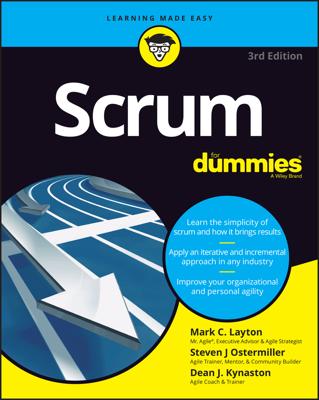Create a user story to help keep your agile project and scrum team on point and on target. An agile user story is a simple description of a product requirement in terms of what that requirement must accomplish for whom. To create a user story, follow these three easy steps:
Identify the project stakeholders.
Make sure that anyone involved with, or affected by, the product and its creation is available to help you create requirements. Stakeholders may include
-
People who interact with customers on a regular basis, such as customer service representatives, sales people, or bank branch personnel.
-
Business experts for the different areas where your product’s customers interact. For example, XYZ Bank may have one manager in charge of checking accounts, another manager in charge of savings accounts, and a third manager in charge of online bill payment services. If you’re creating a mobile banking application, all these people are project stakeholders.
-
Users of your product, if they are available.
-
Experts on the type of product you are creating. For example, a developer who has created mobile applications, a marketing manager who knows how to create mobile campaigns, and a user experience specialist who specializes in mobile interfaces all might be helpful on the sample XYZ Bank mobile banking project.
-
Technical stakeholders, people who work with the systems that might need to interact with your product.
Identify the product’s users.

When thinking about the customers who will use your product, it’s often helpful to assign them personas, such as a salesperson or a customer service representative. Using personas can help you understand exactly what your product may need to do. Keep the customer you described in your product vision statement in mind when creating personas.
Your product stakeholders can help you create personas. Find people who are experts on the day-to-day business for your product. Those stakeholders will know a lot about your potential customers.
Write down the product’s requirements and create user stories.

A good way to create user stories is to bring your stakeholders together for a user story creation session. Have the stakeholders write down as many requirements for each persona as they can think of.
Be sure to continuously add new user stories to your product backlog. Keeping your product backlog up-to-date will help you have the highest priority user stories when it is time to plan your sprint.
You don’t need to spend a ton of time trying to identify every single requirement your product might have at the beginning of the project. You create new user stories and add requirements throughout the process. The best changes often come at the end of a project, when you know the most about the product and the customers.

